We have always been taught to plant in groups of odd numbers, threes and fives and so on, and to create natural-looking drifts that ebb and flow into one another. But what if we choose not to? What if we’re stricter in the ways we plant, using even-numbered groupings, creating straight edges and geometric shapes, and using strips and blocks of limited plant varieties?
In nature plants grow in drifts and groups that overlap and merge, creating that familiar look that has led planting design since the Edwardian gardens of the last century. But does this style of planting suit contemporary garden designs? We still see its use in the current rise of the new English style, employed by leading designers at the Chelsea Flower Show in recent years, but is it still relevant?
The use of planting in blocks and strips links beautifully with a move toward simpler and more minimalistic garden design; it gives the same crisp demarcation in the planting that is achieved through hardscape elements.
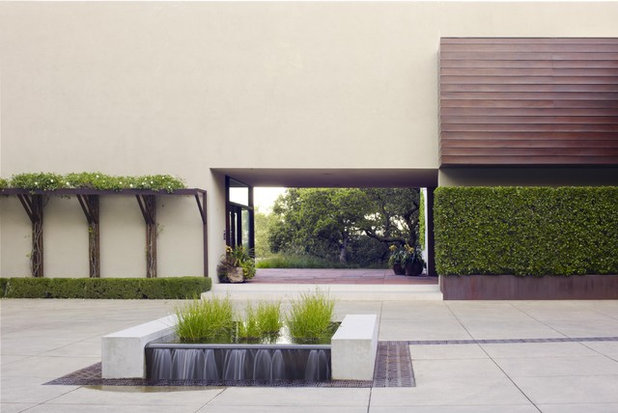
Blasen Landscape Architecture
Minimalist garden design has become more popular lately, as more traditional garden styles require more time to maintain than fits our modern lifestyles. It reduces the landscape to its essentials, keeping it simple while creating an attractive design. To fit with this doctrine, the planting within the garden needs to follow the same lines. Would a traditional, mixed drift planting meet this criteria?
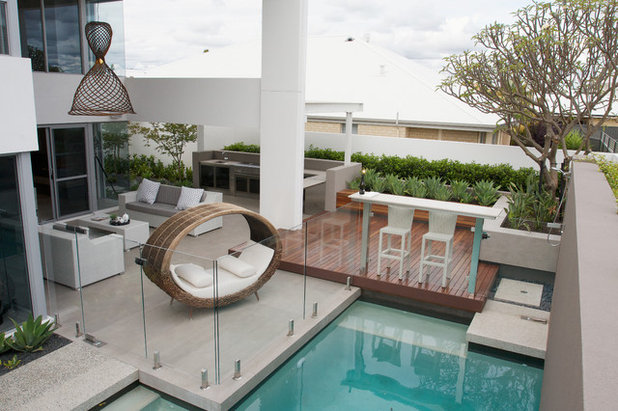
Tim Davies Landscaping
Restricting the planting to the block and strips created by the planters within this design fits the geometric style of this space. A single species of low-growing, evergreen plants creates the blocks for a year-round effect. A mixed, informal drift planting would have confused the overall design.
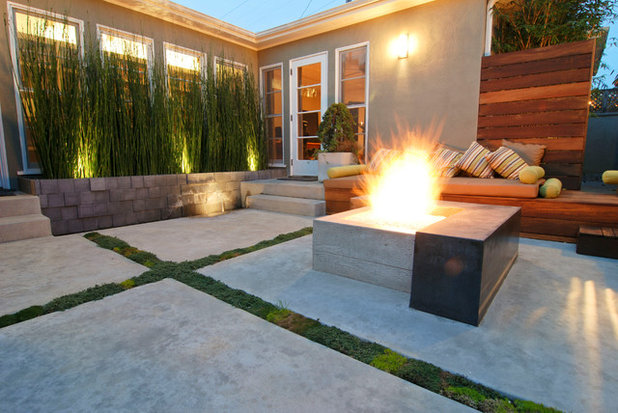
Falling Waters Landscape
This contemporary garden perhaps shows formal block and strip planting in its most extreme. The planting has moved away from nature, becoming just another building block in the garden’s repertoire. Again we can see that the planting been restricted not only in space but also in plant variety.
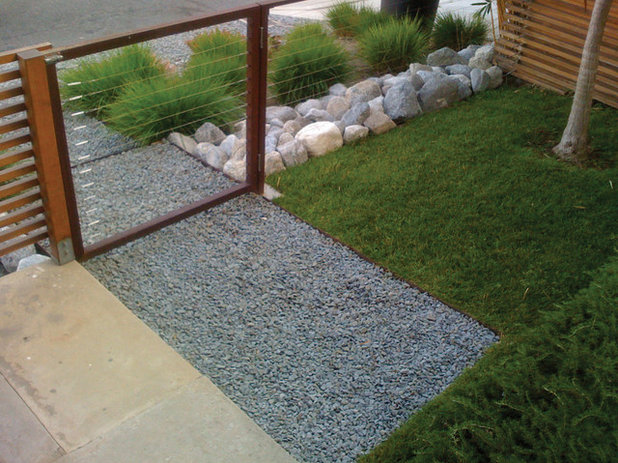
GEL: Griffin Enright Landscape
Combined with the geometric shapes of hardscape materials, a block planting completes this simple scheme.
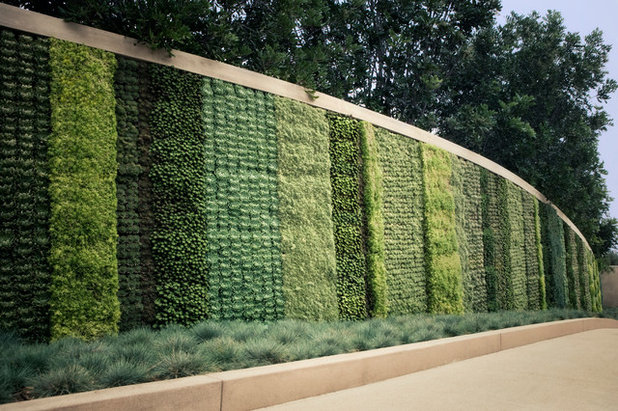
Seasons Landscaping
Green, or living, walls are a great example of a simplicity and style that suit block and strip planting. Strips and blocks of evergreen plants create a wonderful pattern of color and texture and provide a wonderful backdrop to a formal contemporary garden.
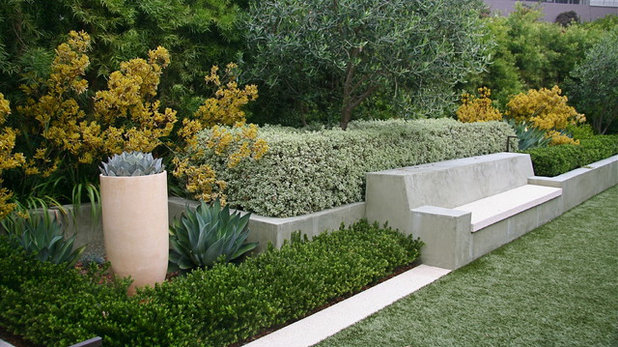
Garden Architecture
Three-dimensional plantings bring the best out of block- and strip-style planting; the many geometric lines complement this overall landscape design perfectly.
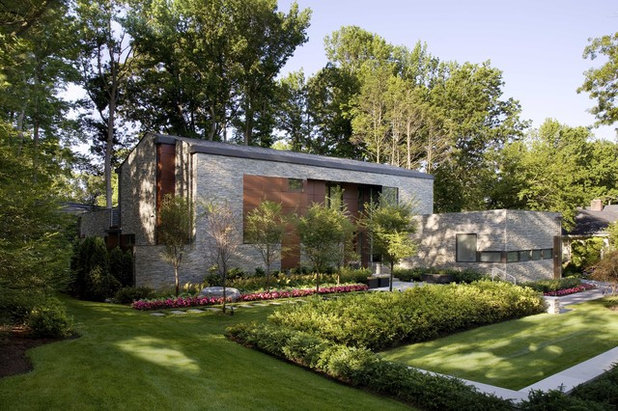
Narofsky Architecture + ways2design
It’s easy, you may say, to find examples of this style of planting in modern minimalist gardens, where the simple plantings lend themself to modern layouts, but what about more traditional garden designs?
Normally you would expect beds like these to be filled with flowing drifts of mixed plantings, but here we see clean lines of geometric beds as well as a restricted planting scheme, with one species per bed. It’s interesting to see that even the trees have been planted in a block to give an extra layer of interest.
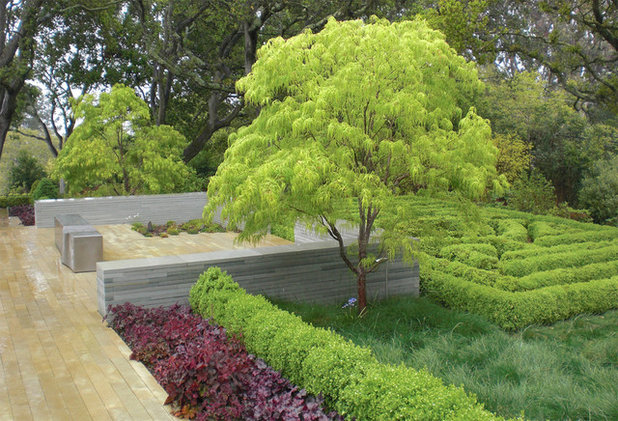
Zeterre Landscape Architecture
You can once again see how well the strips of foliage plantings, including the purple Heuchera, backed by the large block of mass-planted grass, complete this design.
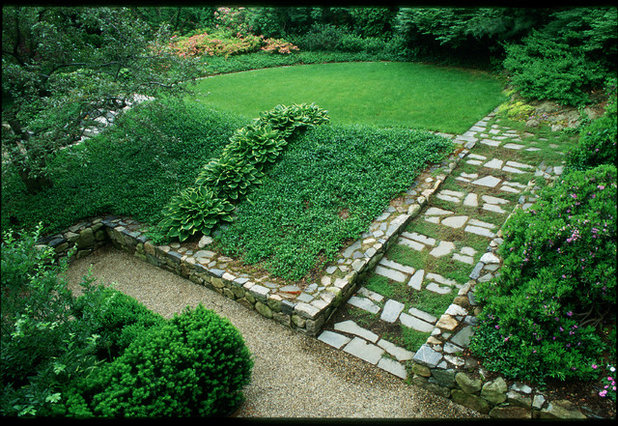
Roger Washburn Landscape Architecture
Even this very traditional garden has succumbed to strip and block planting. The clear strip of variegated hostas not only creates interest in color against the green ground cover, but really makes a feature of the bank.
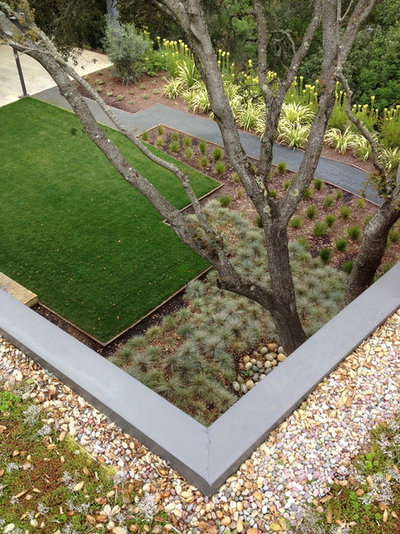
Costello Kennedy Landscape Architecture
Looking down on this small formal garden design, we can clearly see the simple lines of its planting scheme. The blocks of plantings do not flow into one another, but create very distinctive features.
Though the low-growing plants, such as the blue fescue (
Festuca glauca), are not fully grown, we can see how they are perfect for creating the definition required between the planting blocks.





